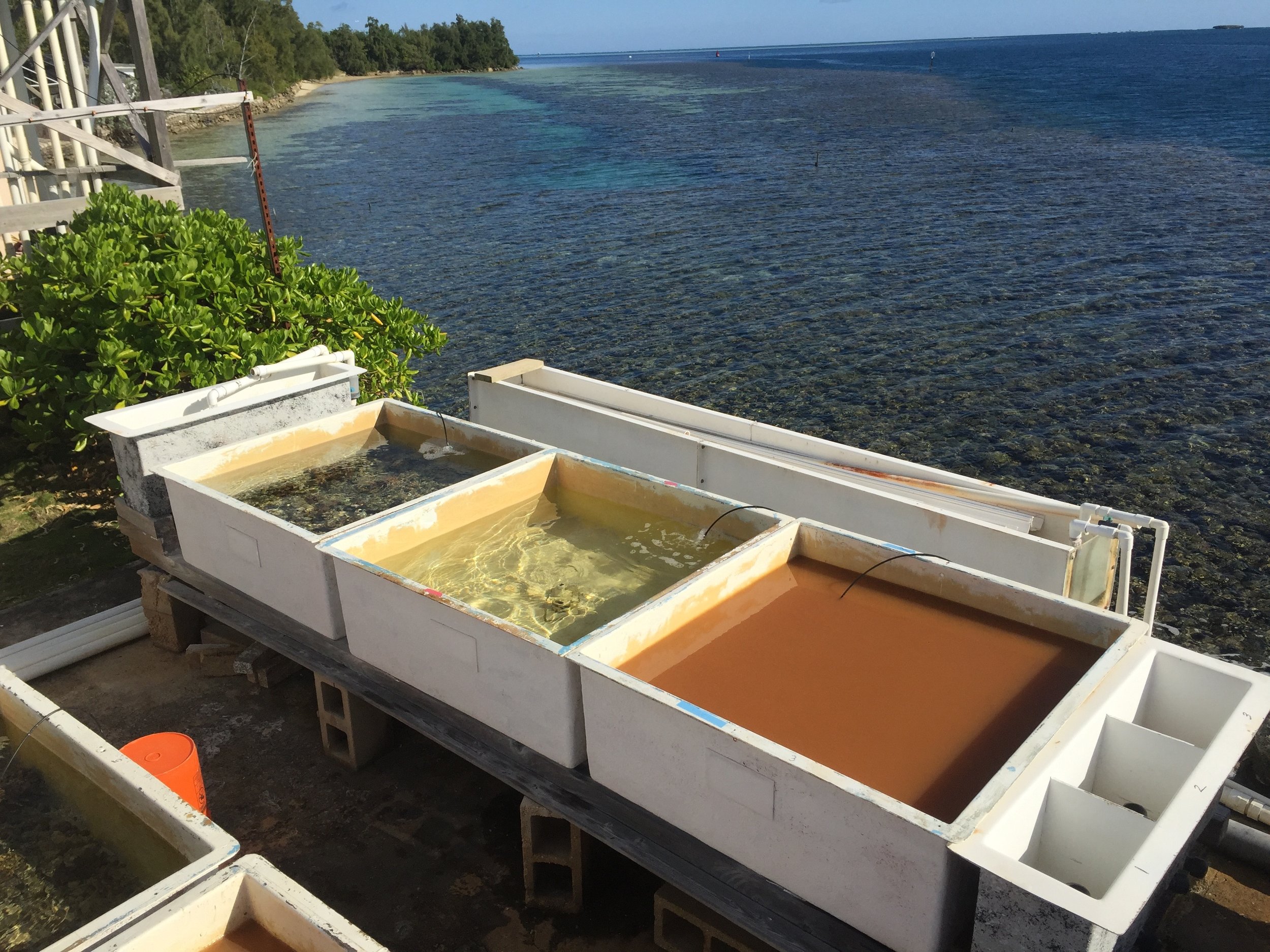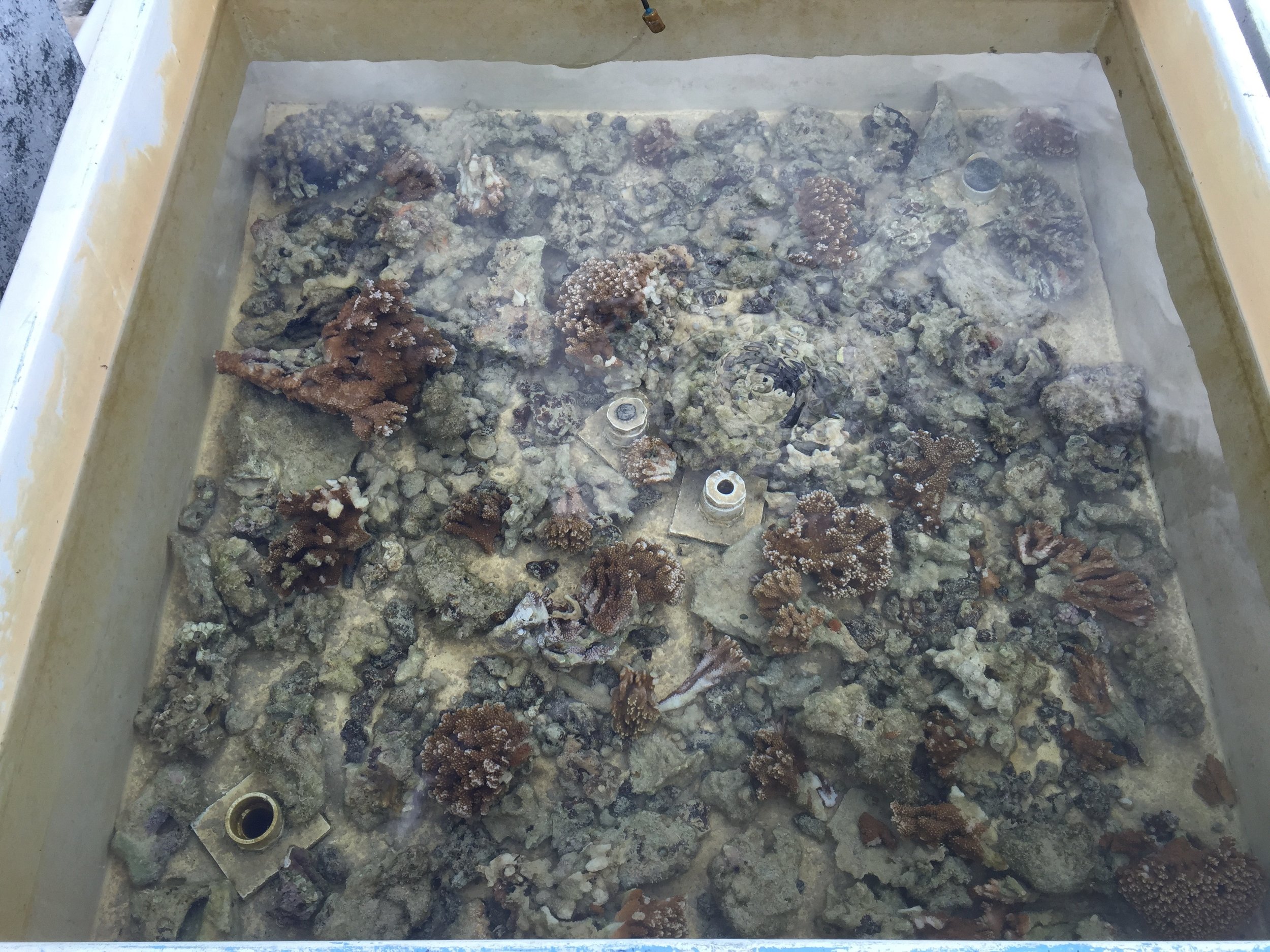The Bahr Marine Ecology Research Program spans across interdisciplinary collaborations with academic, government, non-governmental institutions, and local community groups to develop the knowledge and tools to restore, preserve, and manage our marine ecosystems. Therefore, we are actively involved in providing science-based monitoring and recommendations for management strategies incorporating both western and traditional approaches. We understand the problems and issues specific to local communities and work within those realms to realize solutions.
CURRENT PROJECTS
CORAL COLORIMETRY
The exploration of color as an indicator of coral health is essential to understanding the visual responses of coral to acute stressors including excessive heat, sedimentation, and disease. One of the primary responses of coral to environmental stressors is the loss of zooxanthellae which leads to paling of the coral tissue. However, the wide variety of coral species and leads to an entire spectrum of tissue color. Defining what healthy color ranges are for each coral species is essential for tracking the health throughout the coral colonies. A Caribbean coral species assessment will be headed by graduate student Casey Gallagher to produce a Caribbean coral color card.
Assessing Coral Health: The Hawaiian Koʻa Card
Status: 2017 - ongoing
Collaborators: Texas A&M University-Corpus Christi, Coral Reef Assessment and Monitoring Program, Pacific Islands Ocean Observing System
Managers, scientists, and citizens need a resource to quantify coral health on our reefs. In collaboration with the Coral Reef Ecology Lab at the Hawaii Institute of Marine Biology, we developed the Hawaiian Ko'a card to assess the health of corals during bleaching events.
Coral Color for Animal Wellness
Status: 2019 - ongoing
Collaborators: Texas A&M University-Corpus Christi, Texas State Aquarium
Coral reefs are one of the most biodiverse and productive ecosystems on Earth and various methods are utilized to monitor and assess coral health. But there is not a standardized method for quantifying coral health for corals held in captivity in zoos and aquariums. Therefore, a health assessment card using coral color to non-invasively monitor coral health was developed with the Texas State Aquarium (TSA). This color health swatch is currently be tested and validated with our partners at TSA.
Reef Assessment
RISK ASSESSMENTS OF COASTAL REEFS
Status: 2019 - ongoing
Collaborators: Texas A&M University-Corpus Christi, Coral Reef Assessment and Monitoring Program, Texas AgriLife
We are currently examining the physiological thresholds of corals in Hawaiʻi and oysters in Texas under dual local and global stressors using intermittent flow respirometry. This project aims to understand how oyster reefs and coral reefs are impacted by environmental change and how the local communities that rely on these valuable resources are impacted. Understanding how these critical species respond to simultaneous changes in the environment is essential for predicting the future of these ecosystems. This project is led by Ph.D. candidate, Alexandra Good.
Water Quality Thresholds
Status: 2017 - ongoing
Collaborators: Texas A&M University-Corpus Christi, Coral Reef Assessment and Monitoring Program, US Geological Survey, US EPA
We are working with the US Geological Survey and the Environmental Protection Agency (EPA) to understand the implications sedimentation events have on coral reef communities and how sedimentation may influence and interact with global stressors on modern reefs. This data will define coral species tolerance levels to suspended sediment concentrations and help redefine EPA and State Department of Health 303D Clean Water Act target levels.
Mauka-Makai: Ridge to Reef Connections
Status: 2017 - ongoing
Collaborators: Texas A&M University-Corpus Christi, Coral Reef Assessment and Monitoring Program, Division of Aquatic Resources, The Nature Conversancy, Heʻeia National Estuarine Research Reserve
We are currently working with the Coral Reef Assessment and Monitoring Program, Division of Aquatic Resources, The Nature Conversancy, and the community groups at Heʻeia to understand how restoring the watershed may influence the adjacent coral reef environment.
Coral Reef Assessment and Monitoring Program
Status: 1999 - ongoing
Collaborators: Texas A&M University-Corpus Christi, Coral Reef Assessment and Monitoring Program, Hawaiʻi Division of Aquatic Resources
In 1998 when we developed the Coral Reef Assessment and Monitoring Program (CRAMP) in response to management needs, there was no long-term widespread monitoring program in this state. It was vital to get a baseline of what our reefs looked like, to recognize any changes that may occur, and to identify any impacts that are affecting these reefs. Over 60 sites span the full spectrum of habitats, encompassing the full latitudinal range and include the entire range of protection status from open-access sites with no other legal protection except what applies to the entire state to fully protected sites and a gradient of natural and anthropogenic impacts. This extensive dataset is being used to find trends and patterns on a statewide, island, and site scale and identify forcing functions that drive them.
Science-Based STEM Education Curriculum
Status: 2019 - ongoing
Collaborators: Texas A&M University-Corpus Christi, Texas State Aquarium
This work will create a STEM education curriculum for high school students in Texas, emphasizing the impacts of environmental change and solutions for increased protection and resiliency of coral reefs. This project will utilize the Texas State Aquariums (TSA) Aquavision series to connect high school students to a coral reef research project at the Hawaiʻi Institute of Marine Biology (HIMB). This project aims to educate high school students about science-based solutions to protect coral reef ecosystems amid our climate crisis and increase attitudes towards STEM education and STEM careers. This project is lead by Ph.D. candidate, Alexandra Good.









